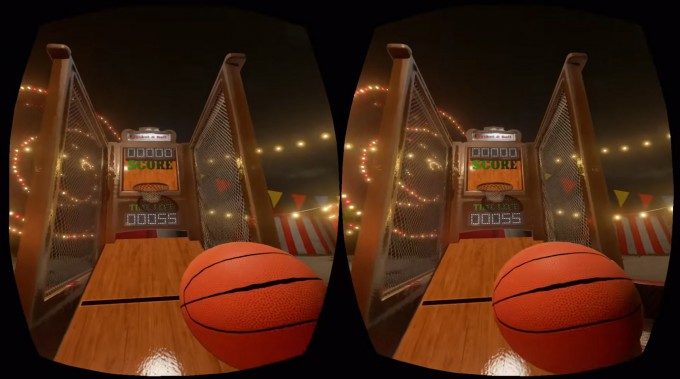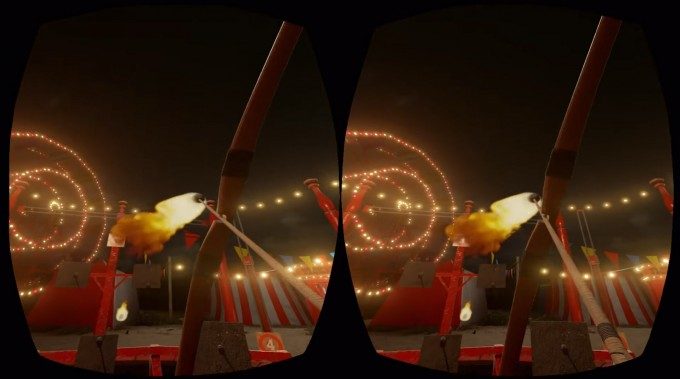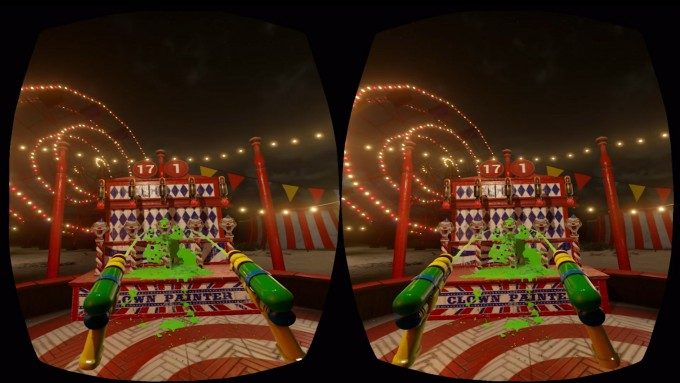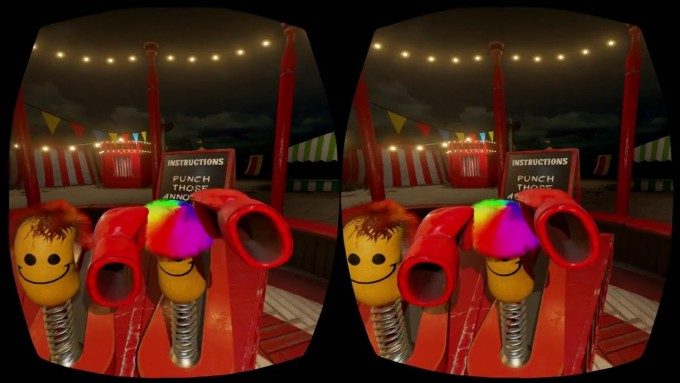NVIDIA recently announced VR Funhouse, a new virtual reality experience which showcases the company’s GPU-based physics systems.
Running on a machine with three of Nvidia’s new GeForce GTX 1080 GPUs (with wholly one of them devoted to physics processing) and the HTC Vive, I stepped into VR Funhouse for the first time. The experience consists of several mini gamers, each showing off some unique aspect of Nvidia’s PhysX library. According to the company, more realistic physics interactions in VR experiences leads to greater levels of immersion.
The first segment I stepped into was a simple demonstration of object physics and haptics. Here I threw baseballs at vases which shattered into many pieces and satisfyingly crumpled into a heap of ceramic shards on the ground. Physical objects within the game now recognize when you’re touching them with your motion controllers and will vibrate accordingly to provide a sense of touch.
While this is essentially the same sort of rumble feedback you’ve felt from the Vive’s controllers up to this point, now physics-based objects within the game world will “know” when you’re touching them and automatically provide a response through the controller’s vibration.
The next part of VR Funhouse that I saw was a bow shooting range. I know I know… we’ve seen a bunch of these in VR. Luckily Nvidia spiced things up. For one, the same object-based haptics were in play; when I knocked and arrow and pulled the string back, I felt a convincing sensation of tension feedback come from the controller. I could also light the arrows on fire which resulted in some beautiful, physically simulated flames and smoke thanks to Nvidia’s ‘Flow’ fluid simulation. When I shot an arrow into a target, the fire spread from the origin point to cover the rest of the target.
Perhaps the most fun experience that I got to try in VR Funhouse was the squirt gun game. Equipped with two squirt guns filled with physically simulated green slime, I got to live out my Slime Time Live fantasies. In front of me were fake clown heads with mouths agape. By spraying the slime into the mouths, a balloon above them would fill up and eventually pop with more slime coming from inside.
All of the slime was simulated to pretty convincing effect, sloshing around and coalescing into puddles and pools. Again, haptic effects on the controllers provided a great sensation of the liquid actually squirting out of the squirt guns as I held them.
Another VR Funhouse experience, which I found to be surprisingly effective, was the beat-em-up section. My hands had become boxing gloves and a row of little mannequins on springs sat before me, just waiting to get punched. This segment was mostly designed to show off Nvidia’s ‘HairWorks’ simulation tech (the mannequins all had some crazy hairdos), but I found the haptics to be the most impressive part.
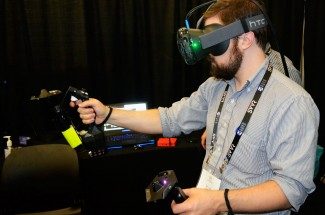
Punching the mannequins gave a surprising sensation of actually hitting something. Even without any real force feedback, my brain made the connection between the visual input of me hitting something with my hand and the physical sensation of the controller’s haptics.
While VR Funhouse also includes Nvidia’s new ‘VRWorks Audio’ plugin for real-time simulated 3D audio, the venue in which I was trying the experience was too noisy to get a sense of how it sounded, so we’ll have to wait and see how much it adds to the experience.
There’s yet more mini-games in VR Funhouse than I had time to try on my first bout—around 10 or so in total. Nvidia says they plan to release VR Funhouse via SteamVR and open-source the code to make it a useful developer example. So far no release date has been specified.
Disclosure: Nvidia paid for travel and accommodation for one Road to VR correspondent to attend an event where information for this article was gathered.

